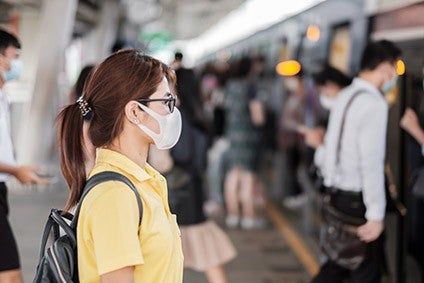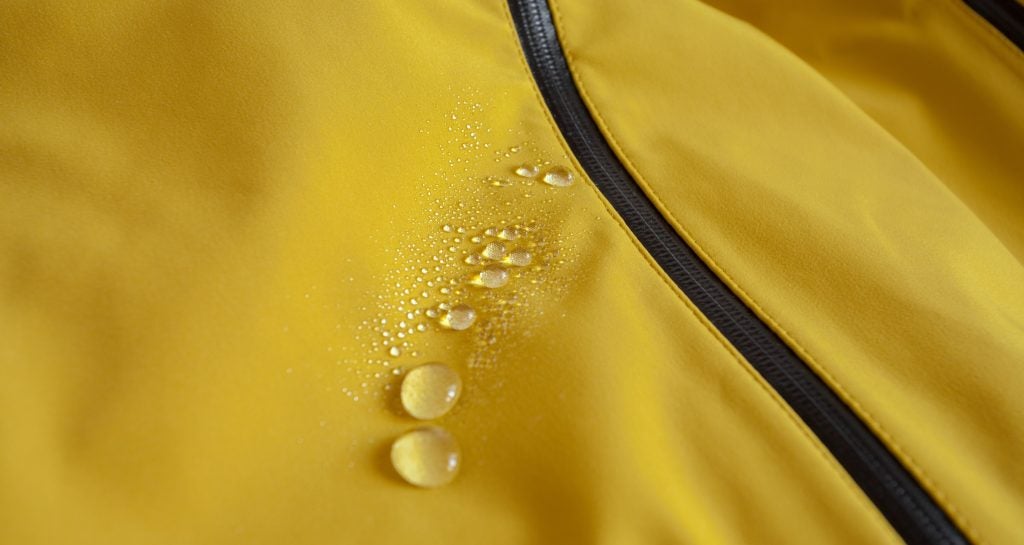
China based analysts are raising concerns that the novel coronavirus (Covid-19) outbreak will disrupt supplies of apparel to major international fashion brands.
Of key concern is the fact that restrictions on movement imposed by the government have impeded operations of clothing and textile manufacturers in provinces that are a key part of Chinese output: Jiangsu, Zhejiang, Guangdong and Shaoxing.
These and at least 23 other municipalities and provinces have been subjected to an extended Chinese New Year holiday break, with the government desperate to minimise exposure to the virus. As a result, China is suffering heavy port congestion, as well as severe disruptions to inbound and outbound air cargo shipments, trucking and rail cargo services.
China is the world’s largest clothing exporter, supplying 29.8% of apparel imported into the US by value in 2019 (an even higher 39.9% by volume) and around 16% of apparel imported into the European Union (EU) by value in 2018, according to the USA’s Office of Textiles and Apparel (OTEXA) and EU statistical agency Eurostat, respectively.
In addition, 97% of clothing sold in Japan is imported – about 60% of this coming from China, according to Japan’s ministry of economy, trade and industry.
How well do you really know your competitors?
Access the most comprehensive Company Profiles on the market, powered by GlobalData. Save hours of research. Gain competitive edge.

Thank you!
Your download email will arrive shortly
Not ready to buy yet? Download a free sample
We are confident about the unique quality of our Company Profiles. However, we want you to make the most beneficial decision for your business, so we offer a free sample that you can download by submitting the below form
By GlobalDataSee Also:
No quick fix
Industry observers within China have told just-style they believe that even if the virus is contained as quickly as SARS was in 2003 – it did not last beyond the summer of that year – there will be no quick back to business as usual.
Part of the problem is that unlike in 2003, the apparel supply chain today competes for manpower and cargo capacity with cash-rich sectors including automotive, pharmaceutical and medical supplies, as well as high-tech manufacturing for optoelectronics and semiconductors.
On the plus side, “fabric mills, as long as their areas are not very seriously infected, will probably resume normal operations next week and function nearly at normal capacity,” says Renaud Anjoran, president of Shenzhen-based China Manufacturing Consultants.
However, he warns: “But cut and sew factories will only be able to attract 50% of the operators compared to before the holiday because some will be afraid of working in close proximity to people who may have been infected – and because manufacturers in other sectors make more margin than apparel factories and will be willing to pay a premium to attract workers.”
Logistics limitations
In terms of effects on logistics, Anjoran adds that more and more passenger airlines, which were carrying a lot of cargo, have suspended their flights to and from China, removing significant logistical capacity.
And this, he says, means that compensating for delays by paying for air freight might no longer be possible in the next few months. “Retailers are not used to that, and there might be many empty shelves this spring and summer,” he says.
This could be the case inside and outside China. The domestic clothing market is suffering – with Chinese consumers and shopkeepers staying at home to avoid the virus.
This has already impacted fashion retailers, with NIKE, adidas, Timberland, Columbia Sportswear, Burberry, Uniqlo and Muji in recent days suspending operations at many hundreds of their shops in China.
According to reports in Germany’s Der Spiegel news magazine, Adidas, Burberry and Timberland rely on China for approximately 20%, 40% and 6% of total revenue respectively.
Concrete financial figures on the damage available have yet to be released, but it is potentially noteworthy that Adidas’s stock share price has shed 8.9% since mid-January.
Similarly, Koray Köse, senior director analyst at US-based research and advisory company Gartner, notes that established hubs and supply networks may experience limitations in capacity and availability – so that even if materials are available, they will be stuck elsewhere. Finding alternative routes and means of transportation will become especially difficult for exporters.
“Once factories across China’s manufacturing sector are back online after the epidemic has peaked, it will put serious pressure on shipping capacity, given that the logistics breakdown during the epidemic caused considerable backlogs.
“It will be very difficult to optimise cargo loads in trucking and shipping when everybody rushes in to get his products to overseas markets. And keep in mind that any addition to shipping capacity requires major capital injections and a lot of lead time,” he adds.
Contingency plans
The China Council for the Promotion of International Trade on 30 January confirmed that China was offering force majeure certificates to local companies unable to fulfil their international contractual obligations due to the coronavirus outbreak, freeing both parties from liability or obligation when an extraordinary event – such as this virus – occurs that is beyond the control of the parties.
UK-based international commercial law firm Hill Dickinson is advising traders and shippers to review applicable force majeure provisions in their contracts with Chinese suppliers to ascertain whether the provision is appropriate, together with any notice requirements in the clause.
“Consider whether the spread of novel coronavirus may impact other facilities in the supply chain and make contingency plans, or trigger existing ones,” Hill Dickinson said in a note.
Nevertheless, in a posting on her private LinkedIn account, an export manager at Hubei Jiezhixin textiles, in Wuhan, the epicentre of outbreak, said she has to be back at the office on 14 February but has already started working at home, so is confident that any fabric orders will be processed.
Online boost
Similarly, Olivier Verot, the founder of Shanghai-based strategy consultant Gentlemen Marketing Agency, in recent days noted that many Chinese consumers have spent more time shopping online during the outbreak, due to fears about being in public and potential exposure to the virus.
“Chinese New Year is usually a period of consumption, but people are scared to go to stores and cancelled most trips,” Verot says.
Some of this switch to e-commerce may stick, he predicts. “Online shopping had already been good, and I guess it will grow a lot further because of the virus, with e-commerce delivery services already being back to work here in Shanghai.”
Gartner’s Köse, for his part, predicts the health emergency may accelerate China’s turn to human contact-less apparel e-commerce delivery. He thinks automated booths for self-service collection of parcels, similar to Packstation, a service run by DHL Parcel Germany in Germany and elsewhere, may grow in popularity with Chinese apparel consumers.
“Deployment of pick up-stations has increased in popularity; it’s a cost-effective way for the last mile, and avoids human to human contact,” Köse says.
Click on the following link for more just-style coverage: Is coronavirus a threat to the clothing industry?








